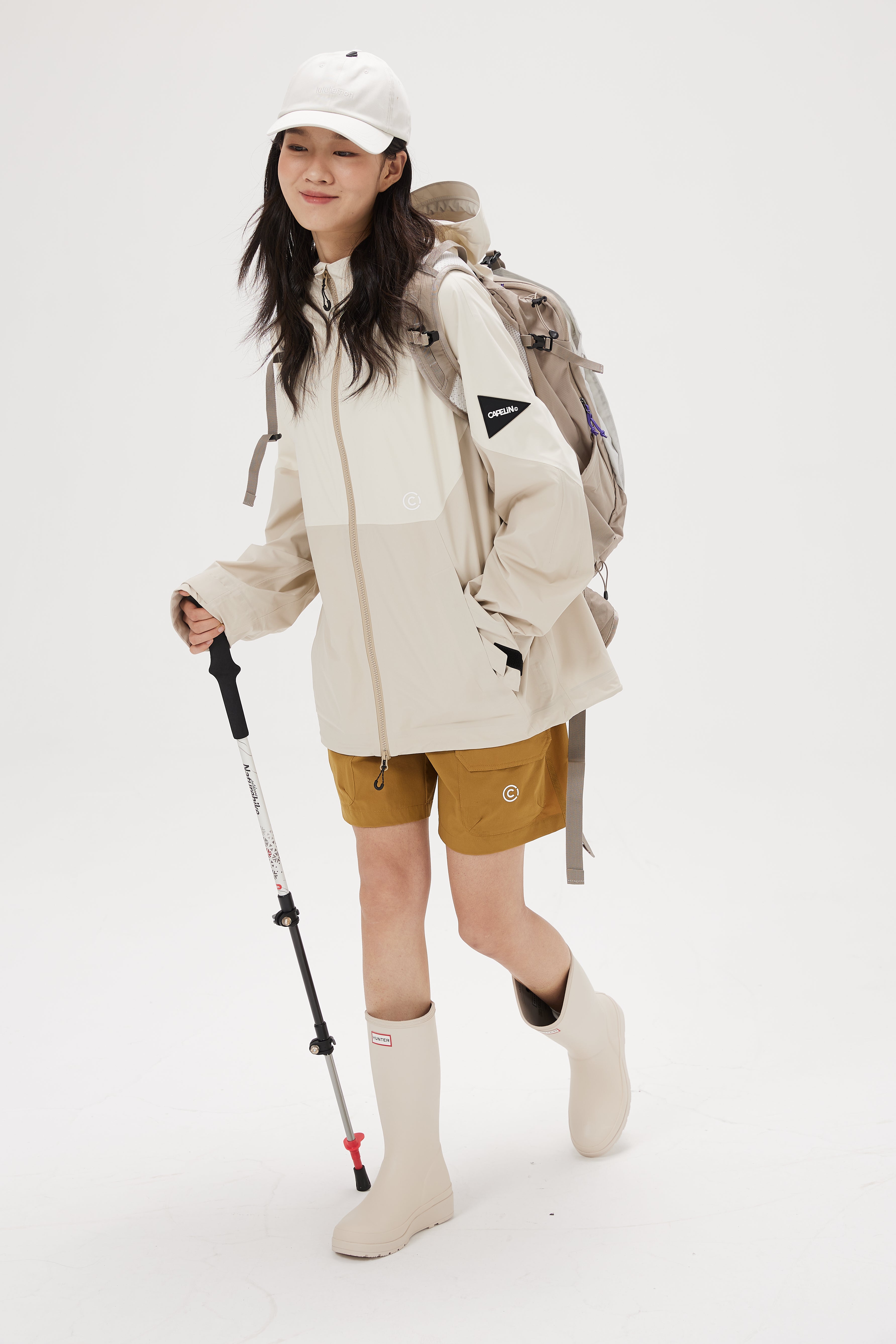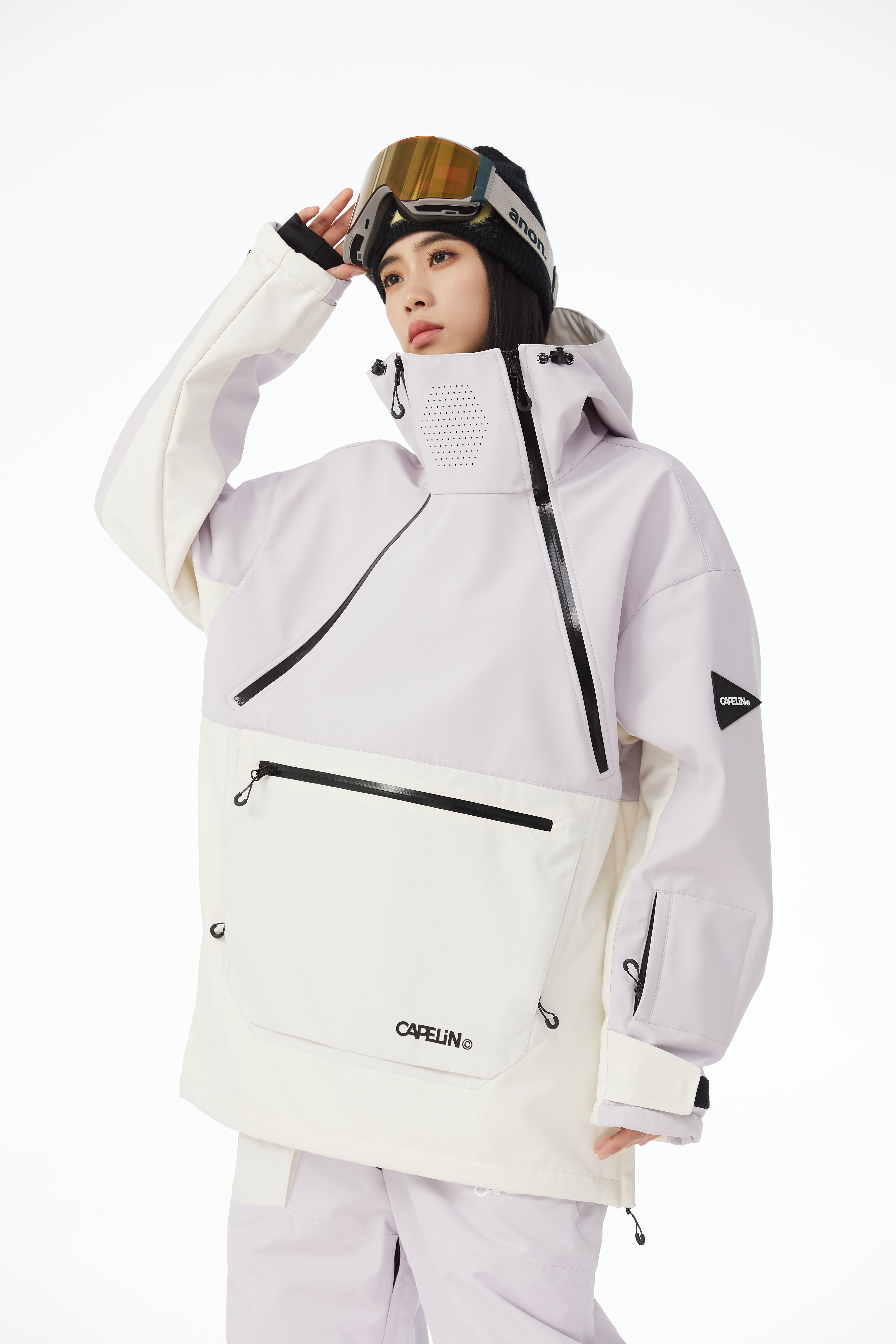A windbreaker jacket is a lightweight, water-resistant outer shell that I can easily pack away when not needed. It protects you from wind and light rain without the bulkiness of a heavy coat.
Moreover, you can wear a windbreaker during activities like hiking, running errands, or everyday use. The material is typically nylon or a similar synthetic that blocks wind allowing breathability.
Whether you need an extra layer to cut windchill or want a rain jacket that won't make you overheat, a windbreaker is your versatile solution. You can easily throw one in your bag whenever changeable weather may strike.
Types of Windbreaker Jackets
Single-layer Nylon Windbreakers
When I want a lightweight and breathable windbreaker, I go for the classic single-layer nylon design from Capelin-Crew. These jackets use a thin nylon shell to block wind while still allowing airflow and ventilation. The material makes them incredibly packable - I can easily stuff one into my bag when not in use.
- Lightweight and Breathable: The nylon construction keeps me protected without weighing me down. It's perfect for active pursuits like running or hiking when I need breathability.
- Ideal for Mild Weather and Active Use: These basic windbreakers shine in mild temperatures when I just need a barrier against chilly breezes. Their minimalism makes them my go-to for working out or hitting the trails.
Insulated Windbreakers
I reach for an insulated windbreaker when I need some extra warmth without the bulk of a heavy jacket. These combine a windproof exterior with an insulating liner for versatile protection.
- Provide Additional Warmth and Insulation: The lined interior traps body heat to keep me cozy. Synthetic insulation is common and provides great warmth for the weight.
- Suitable for Colder Weather Conditions: With the added insulation, these windbreakers extend my comfort into cooler temperatures when an unlined shell won't cut it.
Water-Resistant Windbreakers
To shield me from light precipitation, I grab a water-resistant windbreaker treated with a durable water repellent (DWR) finish. The coating causes moisture to bead up and roll off rather than soaking through.
- Treated with DWR Coatings: This durable water repellent treatment gives the nylon face fabric enhanced water protection for drizzles or light showers.
- Offer Protection from Light Rain and Moisture: While not fully waterproof, these jackets handle misty conditions much better than basic windbreakers. The DWR sheds moisture before it can penetrate.
Modular/Convertible Windbreakers
For maximum versatility, I love modular windbreakers with components I can swap out depending on my needs. Zip-out layers and adjustable features let me customize exactly how much protection I want.
- Allow for Adjustability and Versatility: By adding or removing pieces, I adapt the jacket for changing weather. I control insulation, ventilation, and coverage.
- Detachable Hoods, Liners, or Sleeves: Common modifications include zip-out insulated liners for warming up, removable hoods for sun protection, and convertible sleeve lengths for venting.
Key Features and Benefits of Windbreaker Jackets
Wind Resistance
One of the core functions of a windbreaker is its ability to block and deflect wind. The tightly-woven nylon or polyester fabric creates a barrier that cuts through gusts and drafts.
- Ability to Block and Deflect Wind: I rely on my windbreaker to stop chilly breezes from penetrating and robbing my body heat. The wind-shedding properties keep me comfortable.
- Importance for Maintaining Body Heat: By preventing wind from stripping away warmth, a good windbreaker allows me to better retain my core temperature - especially crucial during cool, blustery conditions.
Breathability
While windbreakers shield me from the elements, the best ones also allow ample airflow so I don't overheat from exertion. Breathable fabrics and mesh venting promote cooling.
- Allowing Airflow and Moisture Wicking: As I work up a sweat, the jacket's breathability enables hot air and perspiration vapor to escape instead of trapping it against my skin.
- Preventing Overheating During Physical Activity: This ventilation is key when I'm hiking, running, or engaging in other aerobic activities where I'd otherwise get sweaty and uncomfortable.
Water Resistance
Many windbreakers now feature a durable water repellent (DWR) treatment to provide extra protection from moisture like light rain, snow flurries, or splashes.
- Repelling Light Rain and Splashes: While not waterproof, the DWR finish causes water droplets to bead up and roll off the jacket's surface before being absorbed.
- Providing Protection in Changeable Weather: This water resistance helps me stay dry through brief showers or mixed conditions I may encounter hiking, traveling, or running errands.
Lightweight and Packable
A huge advantage of windbreakers is their ultralight, compact packability. I can easily stow one in a small stuff sack or pocket when not wearing it.
- Easy to Carry and Store When Not in Use: My windbreaker takes up virtually no space or weight in my luggage or daypack until I need its wind and weather protection.
- Convenient for Travel and Outdoor Activities: The portability is ideal for trips where I want an emergency layer just in case, as well as adventures where I'm layering up and down frequently.
Versatility and Layering
Beyond their wind and light rain defense, windbreakers earn high marks for adaptability across changing conditions and activities through strategic layering.
- Suitable for a Wide Range of Activities and Conditions: I can wear my windbreaker as an outer shell for running, hiking, camping, and other outdoor pursuits. It also functions as a stylish everyday jacket.
- Can Be Worn as a Standalone Jacket or as a Layer: When coupled with baselayers or insulating midlayers, my trusty windbreaker becomes a breathable, weatherproof outer component of a complete layering system.
Windbreaker Jackets in Outdoor and Athletic Wear
Windbreakers have become incredibly popular among runners, cyclists, and other outdoor athletes for their ability to provide protection from the elements without compromising breathability.
- Providing Protection from Wind and Weather: When training or competing in windy, rainy, or cool conditions, a windbreaker creates a shield to maintain core warmth and comfort.
- Enhancing Performance and Comfort: The lightweight fabric and venting allow full range of motion and airflow to prevent overheating during intense activity. This boosts endurance.
Integration with Other Outdoor Gear
For outdoor adventurers like hikers and climbers, windbreaker jackets are designed to integrate seamlessly with other technical gear like backpacks, harnesses, and accessories.
- Compatibility with Backpacks, Harnesses, and More: Features like articulated shoulders, hem cinch-cords, and streamlined pockets avoid bulky buckles or straps catching.
- Importance of Layering Systems: As a lightweight outer layer, windbreakers pair perfectly with moisture-wicking baselayers and insulating midlayers in a full thermal regulating system.
Trends and Innovations in Windbreaker Design
As popular as windbreakers are in outdoor circles, manufacturers continue innovating to improve function, durability, and environmental sustainability.
- Advancements in Fabric Technology: New waterproof/breathable membranes, stretch-woven composites, and eco-friendly recycled fabrics push performance.
- Increased Focus on Sustainability and Eco-Friendliness: Brands are using more recycled and renewable materials like recycled nylon and plant-based insulation to reduce environmental impact.












